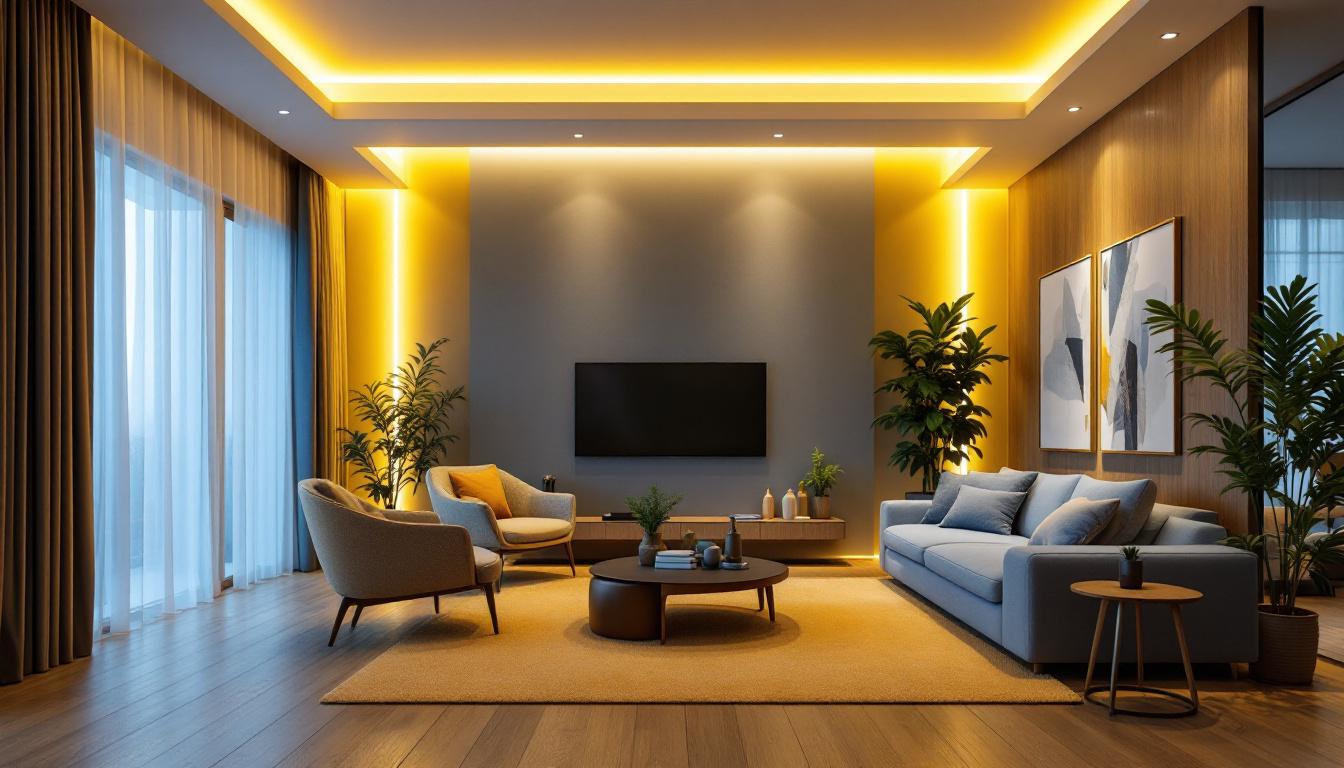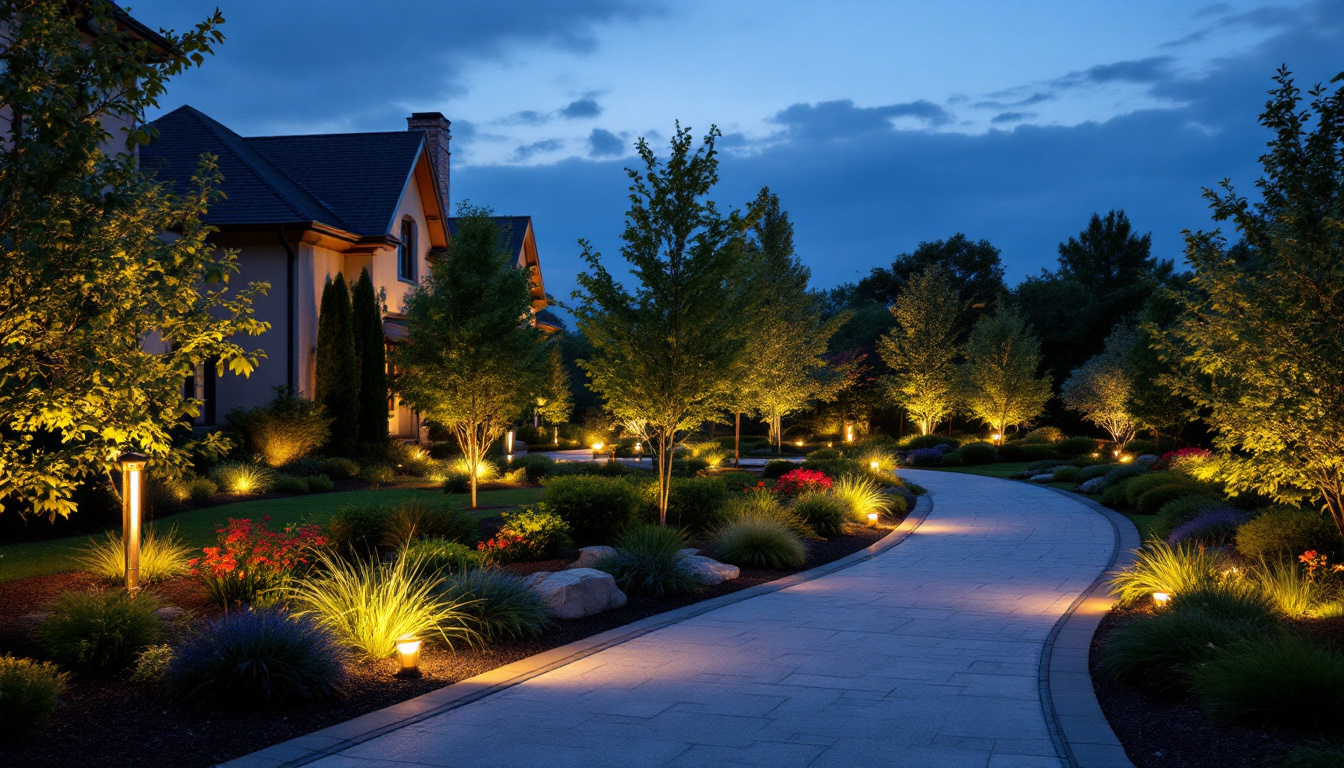
Recessed lighting, often referred to as can lights or downlights, is a popular choice in both residential and commercial settings. These fixtures are installed into hollow openings in ceilings, providing a sleek, unobtrusive source of illumination. For lighting contractors, understanding the nuances of recessed lighting is essential, especially when energy efficiency is a priority.
Energy-efficient lighting is no longer just a trend—it’s a necessity driven by rising energy costs, environmental concerns, and increasingly stringent building codes. Recessed lights, when selected and installed correctly, can significantly reduce energy consumption while maintaining or enhancing the quality of lighting within a space.
One of the key advantages of recessed lighting is its versatility. Available in various sizes, shapes, and finishes, these fixtures can be tailored to suit different design aesthetics and functional requirements. For instance, adjustable recessed lights can be directed to highlight artwork or architectural features, while fixed options provide general illumination. Furthermore, the advent of LED technology has revolutionized recessed lighting, offering bulbs that not only consume less power but also boast longer lifespans compared to traditional incandescent options. This shift not only contributes to lower electricity bills but also reduces the frequency of replacements, resulting in less waste and a smaller carbon footprint.
Moreover, the strategic placement of recessed lights can enhance the overall ambiance of a room. By incorporating dimmer switches, homeowners can easily adjust the brightness to create the desired mood, whether it’s a cozy evening gathering or a bright workspace. Additionally, when combined with smart home technology, recessed lighting can be programmed to operate on schedules or be controlled remotely, further optimizing energy usage. As more individuals become conscious of their energy consumption, the demand for efficient and aesthetically pleasing lighting solutions like recessed fixtures continues to grow, making it a crucial consideration for any lighting contractor looking to meet modern needs.
The most critical decision in energy-efficient recessed lighting is the choice of bulb. LED (Light Emitting Diode) technology has revolutionized lighting with its superior energy efficiency, longevity, and light quality. LEDs use up to 75% less energy than incandescent bulbs and last 25 times longer, which translates into substantial savings for building owners and end-users. This remarkable efficiency not only reduces energy bills but also contributes to a lower carbon footprint, making it an environmentally friendly choice that aligns with modern sustainability goals.
For lighting contractors, recommending LED recessed lights is a clear way to meet client demands for sustainability and cost-effectiveness. While compact fluorescent lamps (CFLs) were once a popular energy-saving alternative, LEDs now dominate due to their instant-on capability, dimmability, and lower mercury content. Additionally, the versatility of LED lights allows for a wide range of color temperatures, enabling homeowners and businesses to create the desired ambiance in any space, from warm and cozy to bright and energizing.
Another advancement is integrated LED recessed fixtures, where the LED is built into the fixture rather than using a replaceable bulb. These fixtures often have better thermal management and optimized optics, enhancing efficiency and lifespan. Although the initial cost can be higher, the total cost of ownership is typically lower due to reduced maintenance and energy use. Furthermore, integrated fixtures are designed with sleek aesthetics in mind, allowing them to blend seamlessly into various architectural styles, which can be particularly appealing in residential and commercial applications.
Moreover, many integrated LED fixtures come equipped with smart technology, enabling users to control lighting remotely via smartphone apps or voice-activated devices. This feature not only adds convenience but also allows for advanced scheduling and automation, further optimizing energy consumption. As smart homes become increasingly prevalent, the integration of recessed lighting with home automation systems will likely become a standard expectation, making it essential for contractors to stay informed about the latest innovations in LED technology and smart lighting solutions.
Recessed lights come with different housing types, primarily IC (Insulation Contact) and Non-IC rated. IC-rated housings are designed to be installed in direct contact with insulation, preventing heat buildup and reducing the risk of fire. Non-IC housings require a clearance from insulation, which can create gaps that reduce thermal efficiency and increase energy loss. This distinction is crucial, especially in climates with extreme temperatures, where the efficiency of heating and cooling systems can significantly impact energy bills and comfort levels.
For energy-efficient installations, IC-rated housings are generally recommended. They help maintain the integrity of the building’s insulation envelope, reducing heating and cooling loads. Lighting contractors should ensure that the housing type matches the installation environment to maximize energy savings and comply with safety codes. Furthermore, the choice of housing can influence the overall aesthetic of a space, as recessed lighting can be seamlessly integrated into ceilings, providing a clean and modern look while ensuring that energy efficiency is not compromised.
Air leakage through recessed fixtures can account for significant energy loss. Air-tight (AT) rated housings minimize air infiltration between conditioned and unconditioned spaces, which is vital for energy conservation. Additionally, Chicago Plenum (CP) rated housings are required in certain commercial applications to comply with fire and smoke safety standards. These ratings not only enhance energy efficiency but also contribute to improved indoor air quality by reducing the potential for contaminants and allergens to enter living spaces.
Selecting housings with appropriate air-tight ratings is a must for contractors aiming to deliver energy-efficient lighting solutions that also meet local building codes and standards. In addition, the integration of AT and CP rated housings can lead to long-term cost savings for building owners by decreasing the need for HVAC system overcompensation. As awareness of sustainable building practices grows, the importance of these ratings becomes even more pronounced, encouraging the adoption of advanced lighting technologies that align with eco-friendly initiatives and energy conservation goals.
Energy efficiency is not just about the fixtures themselves but also how they are positioned within a space. Proper placement and spacing of recessed lights can reduce the number of fixtures required and improve lighting quality.
Contractors should consider the room’s function, ceiling height, and size when planning recessed lighting layouts. For example, kitchens and workspaces benefit from focused task lighting, while living areas may require more diffuse ambient lighting. Using lighting design software or photometric data can help optimize fixture placement to achieve desired illumination levels with fewer fixtures, thereby saving energy.
Incorporating dimmable recessed LED fixtures allows users to adjust light levels based on activity and natural light availability, which can lead to significant energy savings. However, not all LED fixtures are compatible with every dimmer switch, so contractors must verify compatibility to avoid flickering or reduced bulb lifespan.
Advanced lighting controls, such as occupancy sensors, daylight harvesting systems, and programmable timers, can further enhance energy efficiency. Occupancy sensors automatically turn off lights when rooms are unoccupied, while daylight sensors adjust artificial lighting based on natural light levels. These technologies reduce unnecessary energy use and extend the life of lighting components.
Color temperature, measured in Kelvins (K), influences both the ambiance and perceived brightness of a space. Cooler temperatures (4000K-5000K) often appear brighter and can improve alertness in work environments, while warmer temperatures (2700K-3000K) create a cozy atmosphere.
From an energy perspective, cooler color temperatures can sometimes be perceived as more intense, allowing for lower wattage fixtures to achieve the same visual effect. Contractors should guide clients in selecting color temperatures that balance aesthetics and efficiency, tailored to the space’s function.
Lighting contractors must stay abreast of local and national energy codes, such as the International Energy Conservation Code (IECC) and standards set by the Department of Energy (DOE). These codes often mandate minimum efficiency requirements for recessed lighting, including the use of IC-rated housings, air-tight fixtures, and high-efficiency lamps.
Ensuring compliance not only avoids costly rework but also positions contractors as knowledgeable professionals who prioritize sustainable building practices. Many jurisdictions also offer incentives and rebates for installing energy-efficient lighting, which can be a compelling selling point for clients.
Energy-efficient lighting solutions require less maintenance, but proper upkeep is still essential to maintain performance. Dust accumulation on recessed fixtures can reduce light output and increase energy consumption as users compensate with higher brightness settings.
Contractors should educate clients on regular cleaning schedules and recommend fixtures with easy access for maintenance. Additionally, selecting fixtures with long-life LEDs and quality drivers reduces the frequency of replacements, minimizing downtime and operational costs.
Several commercial projects have demonstrated the benefits of upgrading to energy-efficient recessed lighting. For instance, office buildings that replaced traditional incandescent downlights with integrated LED recessed fixtures reported energy savings of up to 60%, along with improved lighting quality and reduced maintenance costs.
In residential settings, homeowners who installed IC-rated, air-tight LED recessed lights noted a more consistent indoor temperature and lower utility bills. These examples underscore the tangible advantages of selecting the right recessed lighting solutions and installation practices.
For lighting contractors, mastering the intricacies of recessed lighting is crucial to delivering energy-efficient, code-compliant, and high-quality lighting solutions. From selecting the right LED fixtures and housings to optimizing placement and integrating smart controls, each decision impacts energy consumption and client satisfaction.
By staying informed about the latest technologies, standards, and best practices, contractors can position themselves as trusted experts in sustainable lighting design, ultimately benefiting clients, the environment, and their own businesses.
Ready to elevate your lighting projects with energy-efficient recessed lighting solutions? Look no further than LumenWholesale, where we provide contractors with high-quality, specification-grade lighting products at unbeatable wholesale prices. Our extensive selection is designed to meet the highest industry standards, ensuring you deliver reliable and high-performance lighting to your clients. With LumenWholesale, you can enjoy the convenience of bulk buying with free shipping, guaranteeing you the best value without any hidden fees. Make the smart choice for your business and your clients by choosing Wholesale Lighting at the Best Value today.

Discover essential tips for lighting contractors to seamlessly integrate LED dimmer light bulbs into projects.

Discover expert strategies for overcoming common challenges in landscape outdoor lighting projects.

Discover the benefits of integrating switch and outlet combos into your lighting projects.

Discover the latest trends in LED light strips for rooms that every lighting contractor should know.